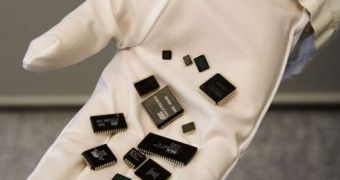DRAM markets have been under heavy pressure this year. The memory business is falling apart because of the over-saturated market that pushes the prices lower and lower. The DRAM market uses commodity for profit (namely the profit is the result of volume sales with small extra costs) and the competition is harsh.
Things may change for this specific sector starting 2008 and DRAM Exchange is estimating that the first quarter sales alone will be enough to pull the DRAM industry out of the gutter. Kingston and Samsung, the major players in the memory sector, think differently and consider that the memory market will limp even after the first quarter of the next year.
"DRAM prices will likely hit a bottom sometime during the first half, and are expected to rise very sharply in the second half", said Chu Woo-sik, Samsung's executive vice president in charge of investor relations. However, because of the free-falling prices in DRAM chips that can barely cover the manufacturing costs, Samsung and Elpida have announced that they will not increase spending.
"As these companies' financial situation worsens, there is just no more money left for investments", said Park Young-joo, an analyst at Woori Securities. "As capital expenditures into DRAM dwindles and production growth slows, some sort of balance could be reached again. It is actually starting now."
At a time when prices of DRAM chips in some cases have fallen below their cost of production, both Samsung and Elpida have said they would not increase spending.
"We should not expect the current disastrous situation to continue next year", said Nam Hyung Kim, chief analyst at market research firm iSuppli. "The industry correction already began in the third quarter."
The industry has been facing a depression for a long time now and needs a technological nudge to put it back on track. The only hope for a stable memory market would be the development of alternative memory technologies, such as FeRAM or ReRAM.

 14 DAY TRIAL //
14 DAY TRIAL //